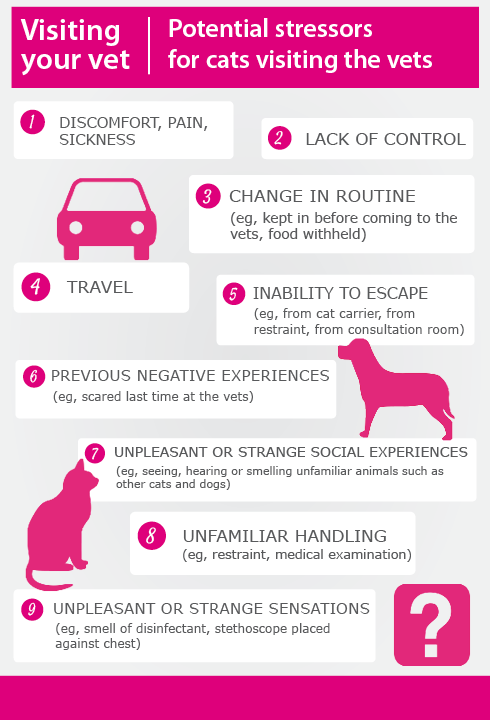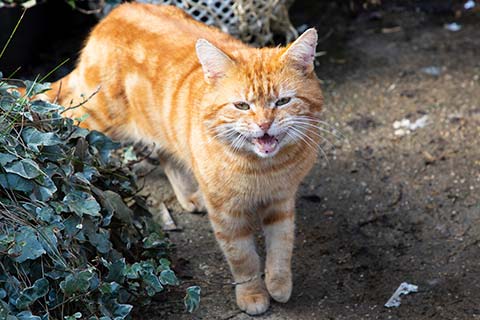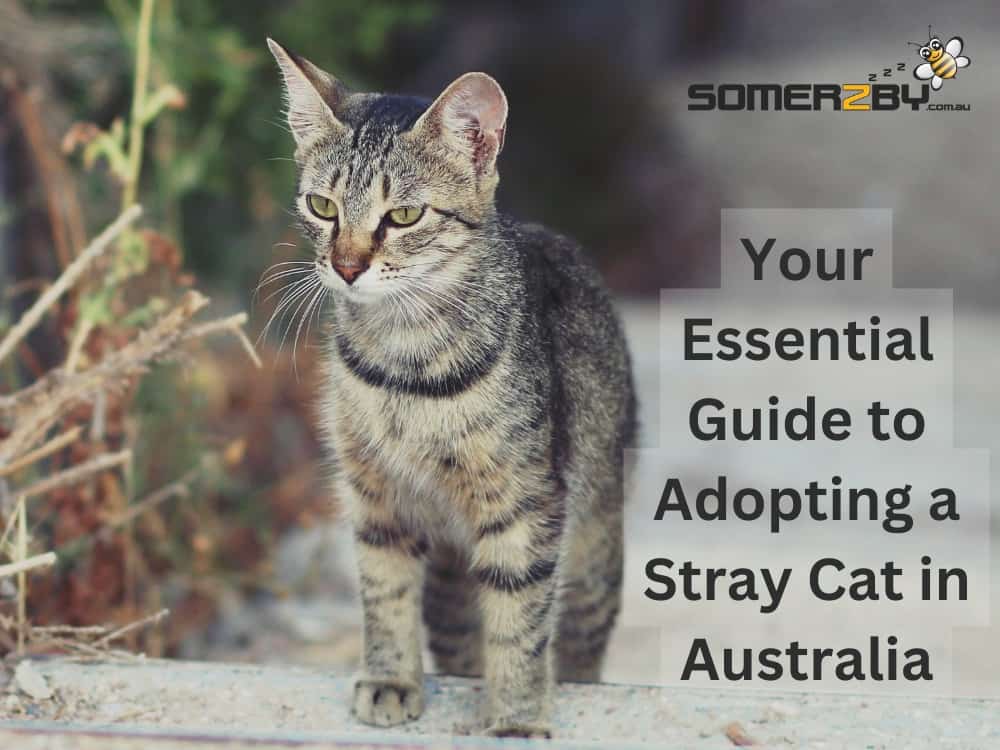To get a feral cat to the vet, safely trap the animal using a humane trap and cover it for calming. Transport the cat to the veterinarian promptly for care.
Dealing with feral cats requires a considerate approach, especially when they need medical attention. Earning their trust is seldom an option, thus, using a humane trap is the most effective way to capture and transport a feral cat to the veterinary clinic without causing stress or injury.
It’s essential to ensure the cat’s comfort and safety during the process, which means covering the trap with a blanket to reduce anxiety. Preparing a trap with enticing food can encourage the cat to enter. Carefully monitoring the trap and acting swiftly once the cat is inside minimizes the animal’s distress. Visiting the vet with a feral cat presents unique challenges, but with the right equipment and approach, you can facilitate necessary health care for these elusive felines.

Credit: mrfrs.org
The Challenges Of Feral Cat Care
Caring for feral cats presents unique difficulties. Unlike domesticated pets, feral cats have not been socialized to live with humans. This makes tasks like vet visits a challenge. Fear, mistrust, and potential health risks can complicate care. Understanding these challenges helps in managing their health and welfare.
Differences Between Stray And Feral Cats
Stray cats often have experience with human interaction. They may have been lost or abandoned. Feral cats are typically born and raised in the wild, or have reverted to a wild state. They are not accustomed to humans, making them more elusive and harder to catch.
Health Risks And Concerns
- Bites or scratches during capture can transmit infections.
- Feline diseases like FIV or FeLV can spread to other cats.
- Parasites from feral cats can affect humans and other animals.
Regular checkups at a vet help control these risks. Preparing for the vet visit is crucial.
Legal And Ethical Considerations
Understanding local laws on feral cat care is vital. Some areas have Trap-Neuter-Return (TNR) programs, which help manage populations. Vets often support TNR, offering lower rates for the procedures. Ethically, the care provided should not harm the cat or the environment.
With care and caution, getting a feral cat to the vet is possible. Patience and understanding their needs make the process smoother.

Credit: icatcare.org
Pre-vet Preparation
Getting a feral cat to the vet is tricky business. The right preparation is key. Here’s how to pave the way for a stress-free trip.
Assessing The Cat’s Behavior
Understanding your feral friend’s behavior is crucial. Watch from a distance. Note their habits and routines. Spot signs of fear or aggression. This knowledge helps choose the best approach.
Creating A Trusting Environment
Trust makes all the difference. Start with short visits. Offer food. Don’t make sudden moves. Use a calming tone. This builds confidence between you and the cat.
Gathering Necessary Supplies
- Cat Carrier – Sturdy and comfortable.
- Gloves – To protect your hands.
- Towels – For covering the carrier, soothing the cat.
- Treats – To entice the cat inside the carrier.
Pack these items early. Place them near you. Easy access is vital. This streamlines the process.
Safe Capture Techniques
Bringing a feral cat to the vet is no easy task. However, with proper safe capture techniques, the process can be smooth for both the feline and you. By understanding and applying the right methods, you ensure the cat’s safety and well-being.
Choosing The Right Trap
When capturing a feral cat, the right trap matters. Select a trap that’s humane and sized appropriately for cats. Avoid traps with sharp edges that might hurt the cat. The trap should have a smooth interior to prevent injuries. Look for traps with a spring-loaded door for quick closure.
Baiting And Placement Strategies
Effective baiting will lure the cat inside the trap. Use strong-smelling food like tuna or canned cat food. Place it at the back of the trap to encourage full entry. Position your trap in a familiar area to the cat, ideally where it eats regularly. Keep the trap on level ground to prevent wobbling.
Minimizing Stress During Capture
Stress reduction is vital during capture. Approach the cat slowly to reduce panic. Once trapped, cover the trap with a blanket to create a calming dark environment. Avoid loud noises and sudden movements. Transport the trap gently to the vet to maintain the cat’s calm state.
Transporting A Feral Cat
Getting a feral cat to the vet requires safe and careful handling. To ensure the journey is stress-free for both the animal and you, follow these steps.
Securing The Trap For Travel
- Choose a sturdy trap that closes securely.
- Line the trap with newspaper for comfort and easy cleaning.
- Cover the trap with a light blanket to create a serene environment.
- Check the trap door multiple times to ensure it’s locked.
Keeping The Cat Calm
- Place the trap in a quiet area before transport to minimize stress.
- Use a pheromone spray inside the trap, if available, for a calming effect.
- Avoid loud noises and sudden movements around the trap.
- Respect the cat’s space; do not poke or prod the trap.
Safety Tips For The Car Ride
| Tips | Why It’s Important |
|---|---|
| Secure the trap with seatbelts or place it in a footwell. | Prevents the trap from sliding and causing panic or injury. |
| Drive smoothly, no sharp turns or sudden stops. | Keeps the cat calm and reduces the risk of distress. |
| Keep the car at a comfortable temperature. | Ensures the cat’s comfort and safety throughout the ride. |
| Avoid playing loud music. | Loud sounds can frighten and agitate the cat further. |
At The Vet’s Office
Successfully getting a feral cat to the vet is only half the battle; what happens at the vet’s office is just as critical. Provide your furry friend with the best possible care by following these steps:
Communicating With Veterinary Staff
Ensure the vet team knows your cat is feral. This alerts them to handle the cat with extra caution and understanding. Share any details about the cat’s behavior and health that could be helpful during the visit.
Managing Expectations
Ask the vet what to expect during and after the appointment. Know that feral cats may react unpredictably under stress. Patiently work with the vet to ensure the visit is as smooth as possible.
Post-visit Care
After the vet visit, monitor the cat closely. Implement any recommended treatments with care. Ensure a quiet recovery space for the cat to de-stress and heal comfortably.

Credit: www.rspca.org.uk
Follow-up And Long-term Solutions
After successfully getting a feral cat to the vet, focus shifts to care beyond the clinic doors. Whether it’s healing from surgery, navigating recovery, or managing its wild lifestyle, tender post-care is crucial.
Releasing The Cat After Medical Care
Upon returning from the vet, ensure a smooth transition back to familiar territory. Follow these steps:
- Choose a quiet time of day for release.
- Keep the cat in the trap or carrier until at its usual habitat.
- Open the door and allow the cat to leave at its own pace.
- Observe from a distance to minimize stress.
Options For Ongoing Management
Long-term care helps maintain well-being. Consider:
| Option | Description |
|---|---|
| Feeding Stations | Regular food sources keep cats healthy. |
| Shelters | Provide protection from harsh weather. |
| Regular Monitoring | Keep an eye on their health and wellbeing. |
Tnr Programs And Community Support
Trap-Neuter-Return (TNR) programs are effective for long-term population management. They involve:
- Humanely trapping feral cats.
- Providing spay/neuter services.
- Returning them to their original location.
Engage with local animal organizations to participate or initiate TNR efforts. Community involvement is vital. It ensures sustainable feral cat populations with healthy lives.
Frequently Asked Questions Of How To Get A Feral Cat To The Vet
How Do You Catch A Feral Cat To The Vet?
To catch a feral cat for a vet visit, use a humane trap baited with food. Place the trap in the cat’s known territory and wait quietly. Transport the trapped cat carefully to ensure its safety and minimize stress during the journey to the veterinary clinic.
Will Vets Treat A Feral Cat?
Yes, many vets will treat feral cats for health issues, injuries, or for spaying and neutering services. Always call the clinic first to confirm policies and availability.
How Do Vets Sedate Feral Cats?
Vets sedate feral cats using injectable anesthetics or tranquilizers, often delivered via a pole syringe or blow dart for safety.
Will A Vet Euthanize A Feral Cat?
Some vets may euthanize a feral cat if it’s severely ill or injured. Ethical considerations often guide this decision, and alternatives like trap-neuter-return programs are preferable when feasible.
Conclusion
Getting a feral cat to the vet can seem daunting, but it’s vital for their health and well-being. With patience, the right approach, and a touch of creativity, you can ensure these wild-hearted creatures receive the care they need. Remember, success lies in the preparation and understanding of feral behavior.
Encourage others to learn these techniques; together, we can make a positive difference in the lives of feral cats everywhere.


